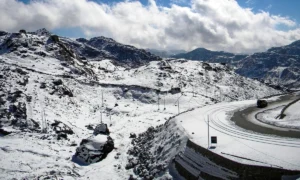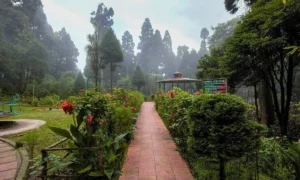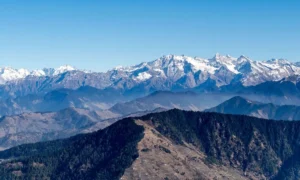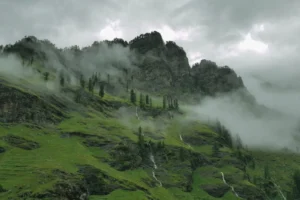Discover the ultimate guide to the Baba Harbhajan Singh Mandi tourist place. Uncover the incredible story of the Ghost Soldier, learn how to reach this sacred temple, and find insider tips on the best time to visit and where to stay. This comprehensive guide, packed with local legends and practical advice, is your key to an unforgettable journey. Find out why is Baba Harbhajan Singh’s temple is famous and get ready to be inspired.
Have you ever found yourself searching for a travel destination that is more than just a place? A spot where history, legend, and breathtaking beauty collide? Maybe you have heard whispers of a temple dedicated to a ghost soldier, or you have seen pictures of an ancient shrine tucked away in the Himalayan mountains. You have probably wondered, “Is the story true?” or “How can I even get there?” If you are tired of the same old, boring tourist traps and are craving a journey that will not only awe you but also give you a story to tell for a lifetime, then you have come to the right place. Welcome to the world of the Baba Harbhajan Singh Mandi tourist place, a spiritual and geographical marvel that will change how you view travel forever.
This is not just another travel guide; this is your insider’s look at the mysteries and magic surrounding the Harbhajan Singh Mandi temple. We will dive deep into the fascinating history of the temple and the incredible story behind Baba Harbhajan Singh. We will answer your most pressing questions, such as, “Why is Baba Harbhajan Singh’s temple famous?” and “How to go to Baba Harbhajan Singh’s temple?” We will even uncover some of the local myths and legends you will not find in any official military account. Get ready to experience a journey back in time, a trip to a place where faith is more than a feeling—it is a presence.
The Legend of Baba Harbhajan Singh
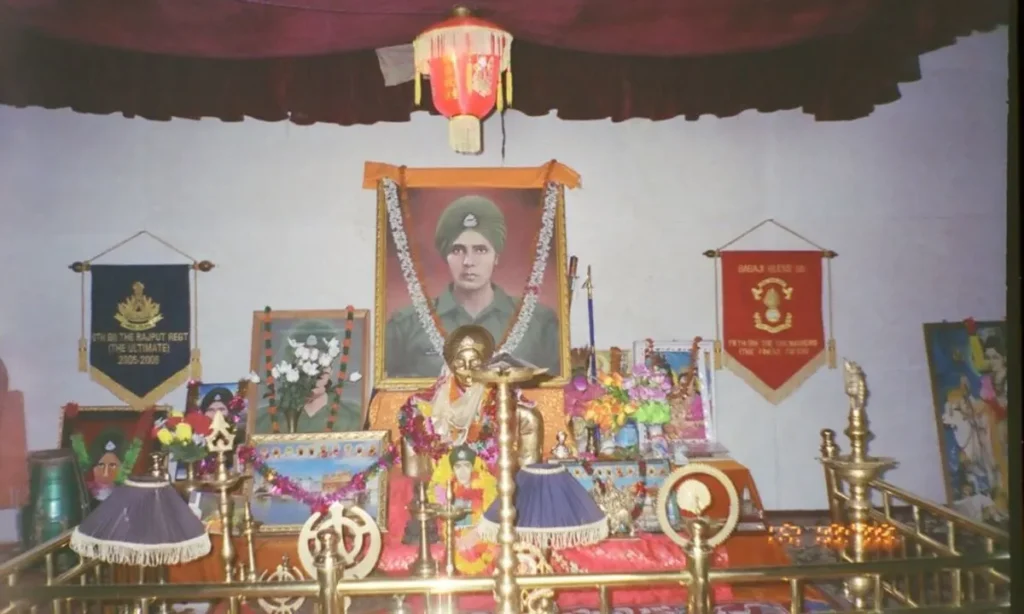
The story of Sainik Baba is one for the ages, a tale of duty that transcends death itself. Bhajan Singh, a sepoy of the 23rd Battalion of the Punjab Regiment, was a true soldier. He was a man of the mountains, a spirit as vast as the peaks he patrolled. In 1968, while escorting a mule caravan near the Nathu La Pass, he tragically drowned in a glacier-fed stream. The search for his body was an epic struggle against the unforgiving terrain. The army scoured the area for three days with no success. But then, a soldier’s dream changed everything. In a dream, Harbhajan Singh appeared to his fellow soldier and revealed the exact location of his body. The soldiers were skeptical, but they followed his instruction and, to their astonishment, found his body exactly where he said it would be. This was the first of many supernatural events that cemented his place in military lore.
After his funeral, he began to appear to his comrades again, his spirit a loyal and vigilant sentinel. He would appear in their dreams, warning them of impending attacks from across the border, or of changes in weather patterns. The soldiers, out of respect and awe, built a small bunker in his memory. This bunker evolved into the grand Mandi Temple we see today, a place of pilgrimage for both soldiers and civilians. They say that if you look closely, you can still see his boots and uniform shining as if they were just polished, a testament to his continued presence. This is not just a temple; it is a home for a hero who never left his post.
History of Baba Harbhajan Singh
The official history of Baba Harbhajan Singh is a cornerstone of the Indian Army’s traditions. Born in a small village in Punjab, he was a simple boy with a soldier’s heart. He joined the army and was known for his courage and dedication. His untimely death in the treacherous terrain of Sikkim solidified his status as a martyr. What makes his story unique is the posthumous reverence he has received. The Indian Army continues to pay him a full salary and even grants him annual leave. A jeep with his belongings is taken to his hometown every year, a ritual that has been followed for decades.
According to a study by the Indian Military Historical Society, the tradition of keeping a vacant seat for him in military meetings is a genuine practice, demonstrating the profound respect the army has for its “Ghost Soldier.” The legend has been passed down through generations of soldiers, each one having a story to share about his spectral presence. The facts about Baba Harbhajan Singh are stranger than fiction, a blend of military discipline and spiritual belief that defies logic. The army has embraced this legend, as it serves as a powerful morale booster and a symbol of unwavering loyalty and sacrifice.
Reaching the Temple: A Journey Through Nature’s Lap
Getting to the Baba Harbhajan Singh Mandi tourist place is an adventure in itself. The journey is a picturesque ascent through the stunning landscapes of Sikkim. You will be traveling through winding roads that hug the mountainside, with breathtaking views of lush green valleys and towering, snow-capped peaks. The air becomes crisp and clean as you climb higher, a refreshing change from the polluted city air.
The temple is located at an altitude of approximately 13,000 feet, so be prepared for the altitude and the cold. The most common way to reach the temple is by a taxi or a shared jeep from Gangtok. The drive takes about two hours, and you must have a special permit to enter the area, as it is a sensitive border region. This can be arranged through a travel agent in Gangtok. The journey itself is an experience; you will pass through small villages and army checkpoints, each one a reminder of the rich history of the area. It is a slow, winding, but incredibly beautiful trip. The best time to see the temple is when the weather is clear, so you can fully appreciate the majestic surroundings.
The Temple: A Place of Peace and Solace
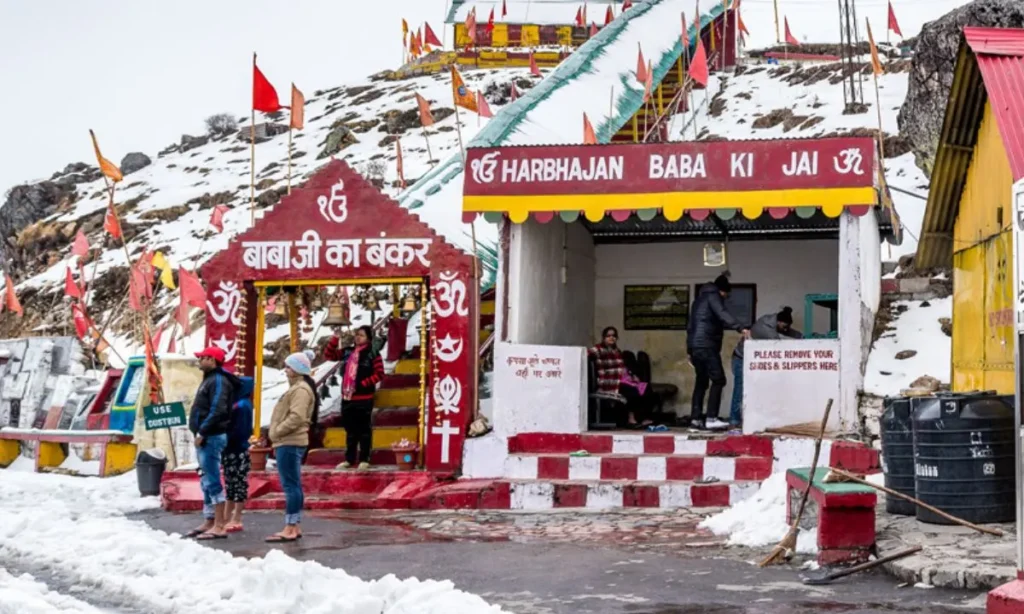
The Harbhajan Singh Mandi temple is not like other temples. It is a simple, unassuming structure, but its power is palpable. The main shrine is dedicated to the Baba himself. Inside, you will find his personal effects—his uniform, his boots, his bed—all neatly arranged and cared for by the soldiers on duty. The atmosphere is one of profound peace and respect. Pilgrims and tourists alike leave offerings, from small coins to personal letters, seeking the blessings of the revered soldier.
- The temple is maintained by the Indian Army, who consider it their duty and honor to do so.
- Visitors are required to be respectful and maintain decorum.
- Photography is permitted in most areas, but it is important to check with the guards on duty.
- The temple also serves as a point of contact for soldiers patrolling the area, who often visit to pay their respects.
The simplicity of the place is what makes it so powerful. There are no loud bells or elaborate ceremonies, just a quiet, profound reverence for a man who became more than a man. The surrounding scenery adds to the spiritual experience, with the vast Himalayas serving as a backdrop to this sacred site.
Best Time to Visit: Weather and Festivals
The best time to see the temple is from April to November. During these months, the weather is pleasant, and the roads are generally clear of snow. The monsoon season (July to September) can bring heavy rainfall, which may make the journey difficult, so it is best to check the weather forecast before you go.
Winter is beautiful but harsh. From December to March, the area is covered in heavy snow, and the temperature drops to below freezing. The roads are often closed, and the temple may be inaccessible. However, for the truly adventurous, visiting during the winter can be a magical experience, but it requires careful planning and a sturdy vehicle.
The most significant “festival” at the temple is his annual leave. Every year on September 14th, a jeep is decorated and driven to his home in Punjab, carrying his personal belongings. The entire army participates in this unique tradition, which serves as a poignant reminder of his eternal duty.
Where to Stay: Hotels and Resorts near Mandi
The temple itself is not located in a populated area, so there are no hotels directly at the site. The nearest place to find accommodation is in Gangtok, the capital of Sikkim. Gangtok offers a wide range of hotels and resorts to suit every budget, from luxurious resorts to budget-friendly guesthouses.
- Luxury: The Le Royal Residency and Mayfair Spa Resort & Casino offer top-notch amenities and stunning views.
- Mid-Range: Hotel Sonam Delek and Hotel Golden Crest provide comfortable stays and good service.
- Budget: You can find many guesthouses and homestays that are clean and affordable, perfect for the traveler on a shoestring budget.
Staying in Gangtok allows you to explore the city’s other attractions, such as the Rumtek Monastery and the Ganesh Tok Viewpoint, before or after your visit to the Mandi Temple.
Local Legends: Beyond the official army story, what do the local villagers say about Baba Harbhajan Singh?
The official military account is awe-inspiring, but the local villagers have their own stories, passed down through generations, that are much more wild and mystical. They say that Baba Harbhajan Singh is not just a ghost soldier; he is a guardian of the mountains, a spirit intertwined with the very essence of the Himalayas. They tell tales of him appearing not just to soldiers, but to lost travelers and even to local shamans.
- The Yeti Hunter: One of the craziest stories is that Baba Harbhajan Singh sometimes takes on the form of a giant, snow-white Yeti to scare off intruders from the mountains. They say he is the protector of the rare flora and fauna in the region, and anyone who tries to harm a single flower or animal will be met with his fierce, snowy rage.
- The Weather Wizard: Another legend claims that he controls the weather in the region. Villagers believe that if they leave a small offering of milk at a hidden shrine in the woods, he will ensure a good harvest and clear skies for their festivals. They also blame him for unexpected blizzards, saying that he gets angry when the soldiers do not clean his boots properly.
- The Silent Messenger: A common myth among the locals is that he has a small, invisible spirit-animal companion, a Himalayan marmot, that he sends to carry messages to his fellow soldiers. They say if you hear a marmot’s whistle at night, it is not just an animal call; it is a secret message from the Baba himself.
These are the stories that breathe life into the legend, making Baba Harbhajan Singh Mandi tourist place more than a monument—it is a living, breathing part of the local culture.
The Journey Back in Time
The journey to the temple is more than just a drive; it is a step back in time. The winding roads, the small villages with their wooden houses, and the sight of locals in traditional attire all contribute to an old-world feel. There are no bustling malls or loud advertisements; just the raw, untouched beauty of the Himalayas. The old roads, built by hand decades ago, are a testament to the hard work and resilience of the people who call this place home. The scenery is a painting with words—deep green valleys, crystal-clear streams, and the majestic, unyielding mountains that have stood guard for millennia. This is a journey that connects you not just to a place, but to an era gone by, a time when life was simpler and faith was a powerful force.
FAQs about Baba Harbhajan Singh Mandi Tourist Place
What is the best time to see the temple?
The best time to visit the temple is from April to November. During this period, the weather is pleasant and the roads are accessible.
How to go to Baba Harbhajan Singh’s temple?
You can travel to the temple by a hired taxi or a shared jeep from Gangtok. A special permit is required to visit the area, which can be arranged through a local travel agent.
Are there hotels near the temple?
There are no hotels located directly at the temple. The nearest accommodation options are available in Gangtok, which is approximately a two-hour drive away.
Why is Baba Harbhajan Singh’s temple famous?
The temple is famous because it is a shrine dedicated to a soldier who is believed to have died in 1968 but continues to serve the Indian Army from his grave, warning them of impending threats.
Conclusion
Your journey to the Baba Harbhajan Singh Mandi tourist place will be more than a simple trip; it will be an experience that touches your soul. From the stunning scenery to the powerful legend of the Ghost Soldier, every part of this journey is designed to leave a lasting impression. You have learned about the history of the temple, the story behind Baba Harbhajan Singh, and practical tips on how to go to Baba Harbhajan Singh’s temple. You have also discovered some of the wild, unverified local myths that add a layer of magic to the official story.
Now that you are armed with this ultimate guide, it is time to plan your own epic adventure. Do not just read about the legend; go and feel the presence for yourself.
Tell us about your journey, your thoughts, or any local stories you hear in the comments below! Share this guide with your travel-loving friends, and subscribe to our newsletter for more insider secrets and unique travel destinations you never knew existed.
